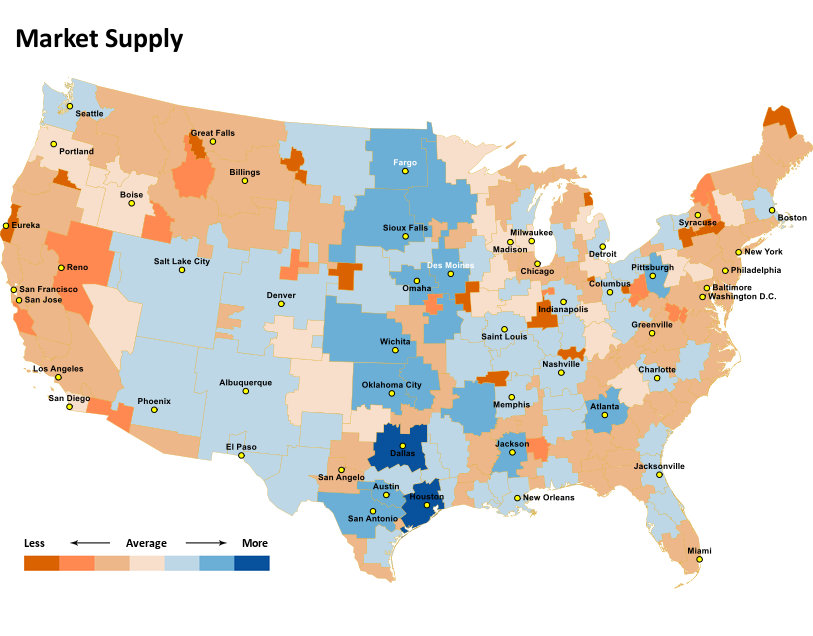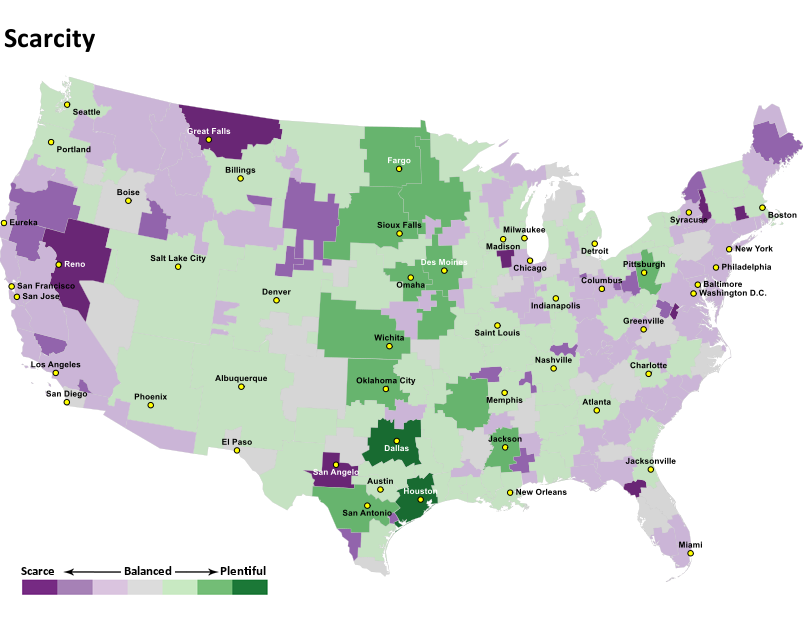Since it’s introduction in 1948, more than 28 million F-Series trucks have been sold and the F-150 is consistently one of the most popular vehicles on the market. But when deciding whether or not to take one more in trade, or buy another one at auction, or wholesale one, it is important to look at marketplace supply and demand.
Are there too many in the local market?
Are there too few?
It’s more complicated than just your sales rate and the day’s supply. We can learn a lot from market demand and that can make you a better buyer, and a smarter seller.
I sat down with the data scientists at Vast again to get their insights on how we can use market demand to tell us whether something is scarce or there are too many. We looked at F-150s as our example.
First, they started by looking at how many F-150s are out there for sale today. Vast processes more than 23 million inventory records every single day and consolidates it down to the 6 million used vehicles that are real and ready for sale, so they know what’s out there.
The scientists put the chart below together, showing Market Supply by DMA. They went a step further though, and looked at how many F-150s are in each market, relative to the number of people who live and drive there. This tells us where F-150s are more popular, like TX (shown in Blue) where there are more per person, compared to places like California where there are less (shown in Orange).

When we look at this chart by itself, what it tells us, while interesting, is not especially helpful. In order to get meaning from it, we have to look at Demand relative to Market Supply. Vast sees more than 100 million used vehicle consumer searches each month, so the scientists have a very large base of demand to look at to help decide if there are too many F-150s for the market, or too few.
They also aren’t looking in the rear-view mirror the way day’s supply does. We all know that going into the winter, day’s supply leads to too much inventory, and going into the spring, too few. Vast scientists see the demand today, compared to yesterday and last week and are able to establish near real time trends. That’s accurate demand.
The chart below called Scarcity shows what they do. They compare the amount of demand (click and search activity by real buyers) there is for F-150s and compare it to the supply, based on the size of the market and its relative popularity (Market Supply above). Markets shown in purple, like Reno, NV are markets where there is more demand than the relative supply of used F-150s can support – call those markets Scarce.
In other markets, shown in green, like Dallas, there are plenty of available F-150s to support the supply. So even though the F-150 is very popular and a good seller in Dallas, the demand comparison tells us that there are plenty, perhaps even too many, out there for sale.

So what? Scarcity tells what to expect from sales rates and prices in the next few weeks. In scarce markets, prices should be firm, trades should be a little harder to find, and auction sales should be brisk. In markets where the F-150 is plentiful, we should expect to see some softness. A used car manager who stays on top of these trends can avoid wholesale loss from aged inventory, even in popular models, and avoid the kind of price discounts that are not needed when vehicles are expected to be scarce.
We can learn a lot by understanding demand and we can use this to price better, advertise smarter and buy more opportunistically.
Here’s a the top 5 markets where F-150s are more scarce:
Rockford, IL
San Angelo, TX
Utica, NY
Great Falls, MT
Charlottesville, VA
Here are the top 5 markets where F-150s are more plentiful relative to the kind of demand in those markets:
Dallas-Ft. Worth, TX
Houston, TX
Omaha, NE
Kansas City, MO
Oklahoma City, OK
Remember, it doesn’t mean that F-150s are not popular or large sellers in those markets, rather, it means that relative to demand, there are more than enough already out there for sale.
Are you regularly reviewing your marketplace supply and demand reports before heading to the auction or placing a number on that next trade-in?








